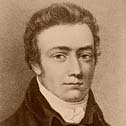If unsure of the correct spelling - aesthetician or esthetician - it may surprise that neither is original. The word aesthetic became commonly known among English speakers in the 1830s, when translators including Samuel Taylor Coleridge and movements such as transcendentalism popularized German philosophy. Æsthetics, spelled with the joined character “æ” known as a ligature, had been written about extensively by German philosophers like Immanuel Kant and Alexander Gottlieb Baumgarten, the latter of whom wrote Æsthetica from 1750-1758. In the mid-nineteenth century, two spellings in English emerged, neither containing the ligature: “aesthetics” and “esthetics.” Though the two letters “ae” together visually resemble “æ,” some linguists consider the single “e” the more accurate alternative.
Many words which used to contain an “æ” have over time adopted one or the other simplified spelling. aesthetician and esthetician are interesting because both versions have persisted.
Whom should you visit for a beauty consultation, an aesthetician or an esthetician? That all depends on the type of advice and skills you seek. Typically, an aesthetician (with an “a”) studies aesthetics as an academic discipline, which is the study of beauty and art in philosophical, sociological, and historical contexts. An esthetician (without the “a”) is more likely to be someone trained in cosmetology, skin care, and other beautifying treatments. However, either spelling can be used for either occupation.
Scholars of aesthetics are quick to point out that beauty and art are not one and the same: beauty can be found outside of art, and art does not have to beautiful. Hopefully the esthetician who treats your skin shares your idea of beauty.
Related Quotations:
“The first duty then of the ‘aesthetician’ is to find a definition of art which shall include all its manifestations.”
—Albert Shaw, editor, Review of Reviews and World’s Work, Volume 4 (1892)
“In contrast to Kant, both the neoclassical aestheticians and Coleridge were disinclined to grant art an autonomous realm in which it would be equally emancipated from the dictates of Understanding and from a burdensome and pretentious kinship with Reason.”
— Sanja Šoštarić, Coleridge and Emerson: A Complex Affinity (2003
“In the basics of skincare and makeup application, Michele’s job is similar to that of most other aestheticians.”
—Kathleen Green, “You’re a what? Medical aesthetician.” Occupational Outlook Quarterly, Spring 2004 Vol. 48, Number 1. (Accessed 2011)
—
A motley combination of Anglo-Saxon, Latin, and Germanic dialects, the English language (more or less as we know it) coalesced between the 9th and 13th centuries. Since then, it has continued to import and borrow words and expressions from around the world, and the meanings have mutated. (Awesome and awful once meant nearly the same thing.)
 Some specimens in the English vocabulary have followed unusually circuitous routes to their place in the contemporary lexicon, and this series, Lexical Investigations, unpacks those words hiding in our midst.
Some specimens in the English vocabulary have followed unusually circuitous routes to their place in the contemporary lexicon, and this series, Lexical Investigations, unpacks those words hiding in our midst.
No comments:
Post a Comment